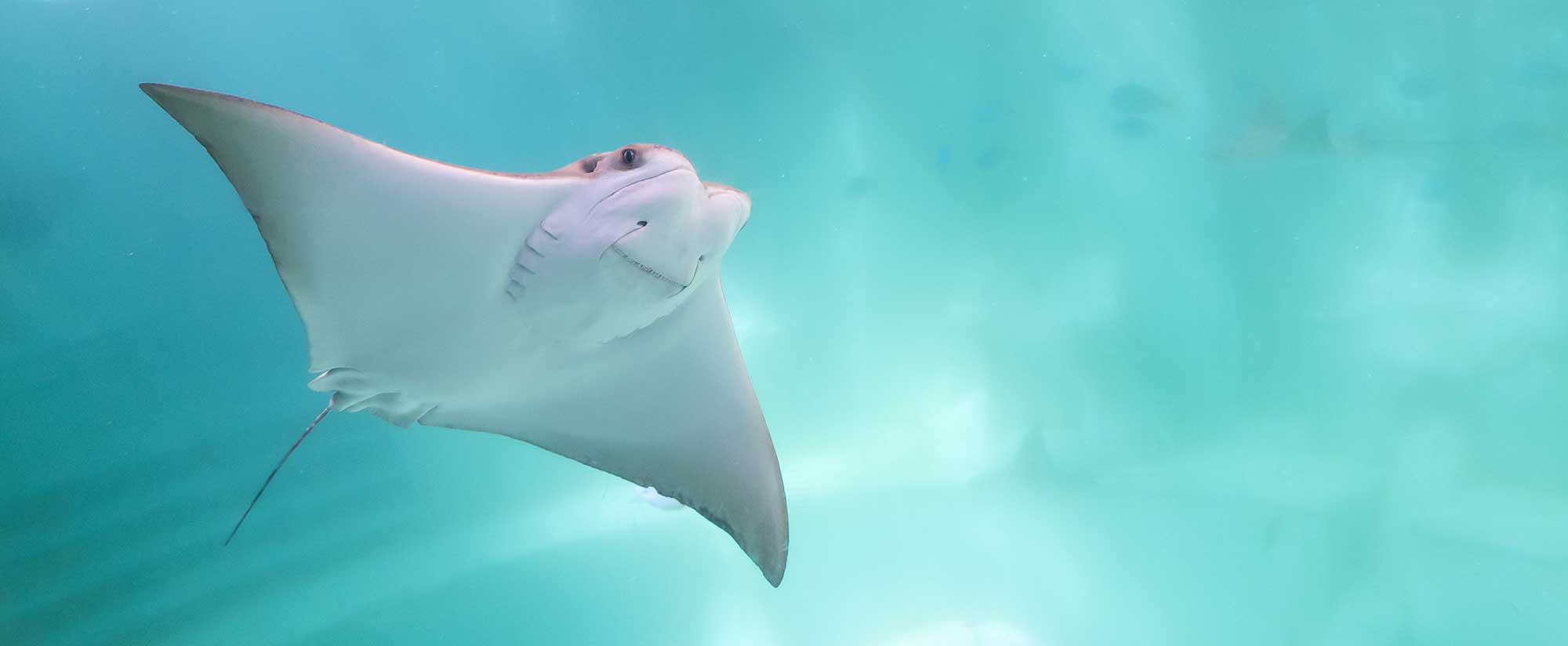Want to know what a stingray or shark feels like? Ray Bay habitat at Long Island Aquarium is the place to find out! You can touch southern stingrays (Dasyatis americana), cownose rays (Rhinoptera bonasus) and Atlantic stingrays (Dasyatis sabina)! For a small fee, you can even feed these large, beautiful animals. But hurry in to feed the rays soon as their food portioned out and there is a limit to how much they can eat each day!
Ray Bay is home to:
Southern Stingray Hypanus americana
Similar to other stingrays, Southern stingrays use electro-receptors to locate prey in addition to touch and strong sense of smell. However, their tails can be twice as long as their body measurement. Their reproductive strategy is ovoviviparous, which means the eggs hatch within the body of the female leading to live birth of pups.
Location: Western Atlantic Ocean/ Northern Gulf of Mexico
Conservation Status: Near Threatened
Cownose Ray Rhinoptera bonasus
Cownose rays are very active swimmers that are known to school in large groups that migrate over long distances. When observed from above, their head resembles a cow’s nose. The lobed section that drops down when eating is part of the head structure since their mouth is actually located on their underbelly.
Location: Western and Eastern Atlantic Ocean as well as can be seen in the Gulf of Mexico, Brazil, and Trinidad
Conservation Status: Near Threatened
Atlantic Stingray Hypanus sabina
Atlantic stingrays belong to a unique group of animals that are euryhaline, which means they can survive in a range of different salinities from salt to freshwater. They are also one of the smallest species of stingrays!
Location: Warm coastal and estuarine waters in Western Atlantic Ocean/Gulf of Mexico
Conservation Status: Least Concern
Shovelnose Ray Glaucostegus typus
Their reproductive strategy is viviparous which means the young are developed inside the body instead of laying eggs. Shovelnose rays are a type of guitarfish which means they are related to sharks and rays. Their tail is very powerful, so they swim by mainly moving their entire back half side to side.
Location: Indo-Pacific Ocean including Singapore, Thailand, and Northern Coasts of Australia
Found resting on mud/sand bottoms or in seagrass beds at depths ranging from 0-100m
Conservation Status: Critically Endangered
White Spotted Bamboo Sharks Chiloscyllium plagiosum
Bamboo sharks are part of the carpet shark family. These sharks are bottom dwellers, which means they still utilize buccal pumping to pull water into their mouth and over the gills using cheek muscles. Similar to all sharks, bamboo sharks have denticles instead of scales covering their body. Denticles are a tooth like scale that create a rough texture.
Location: Indo-Pacific regions at depths ranging from 0-85 m
Conservation Status: Near-Threatened
Horseshoe Crabs Limulus polyphemus
Despite being labeled as a crab, horseshoe crabs are more closely related to scorpions and spiders. Horseshoe crabs are more complex than they appear with 10 legs and gills for breathing under a hard exoskeleton with nine eyes scattered throughout their body.
Location: Widespread; Horseshoe crabs can be found in the intertidal zone along many coastlines around the US and in multiple oceans worldwide excluding the Arctic Ocean
Conservation Status: Vulnerable

